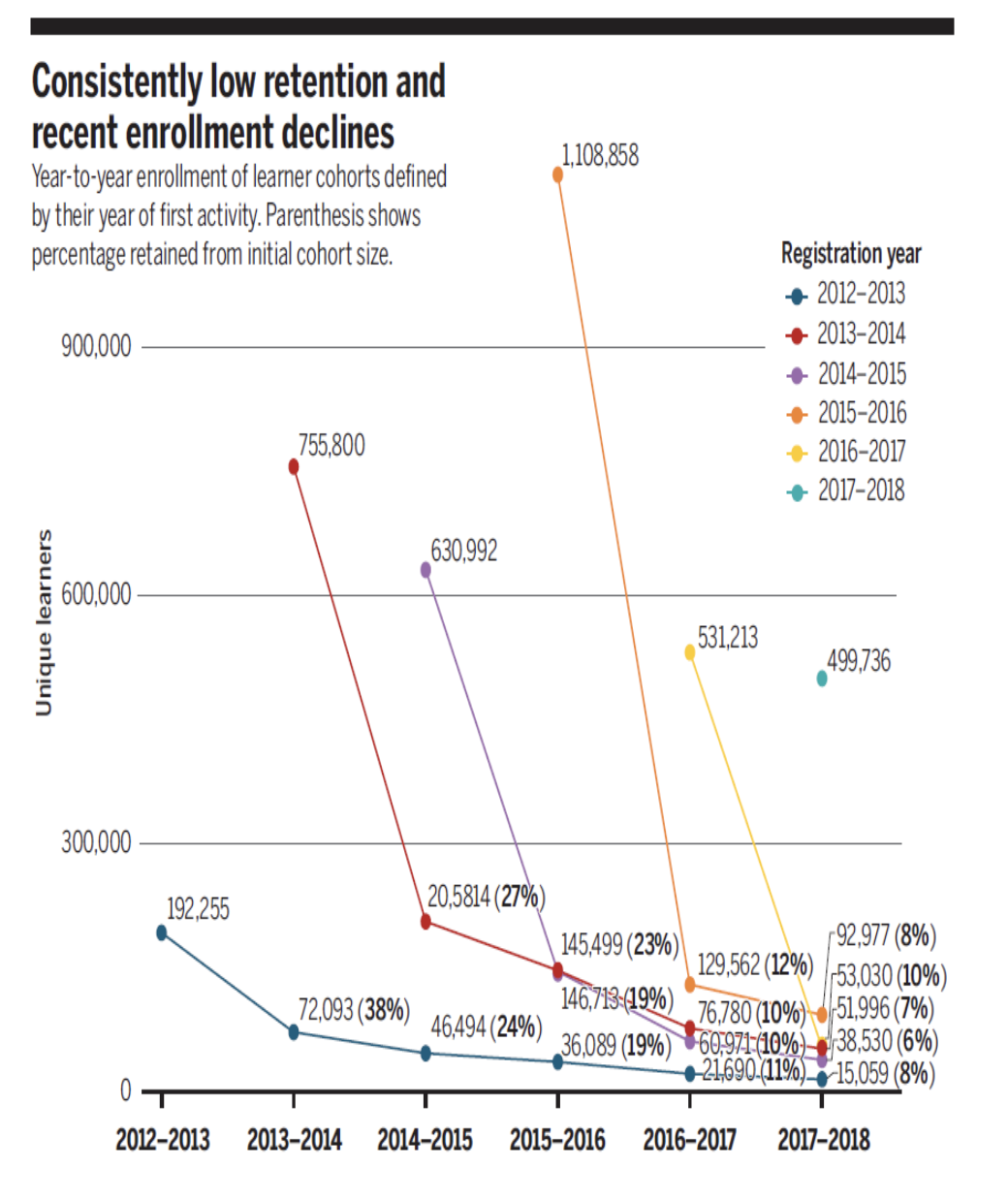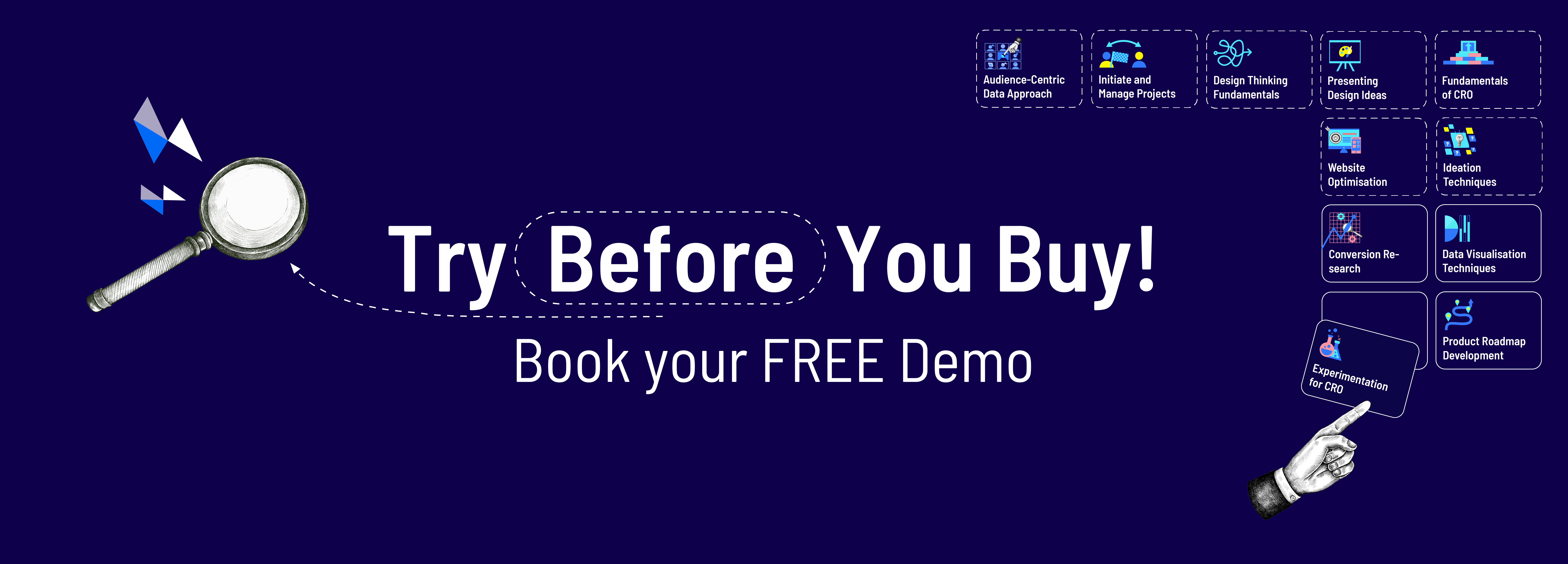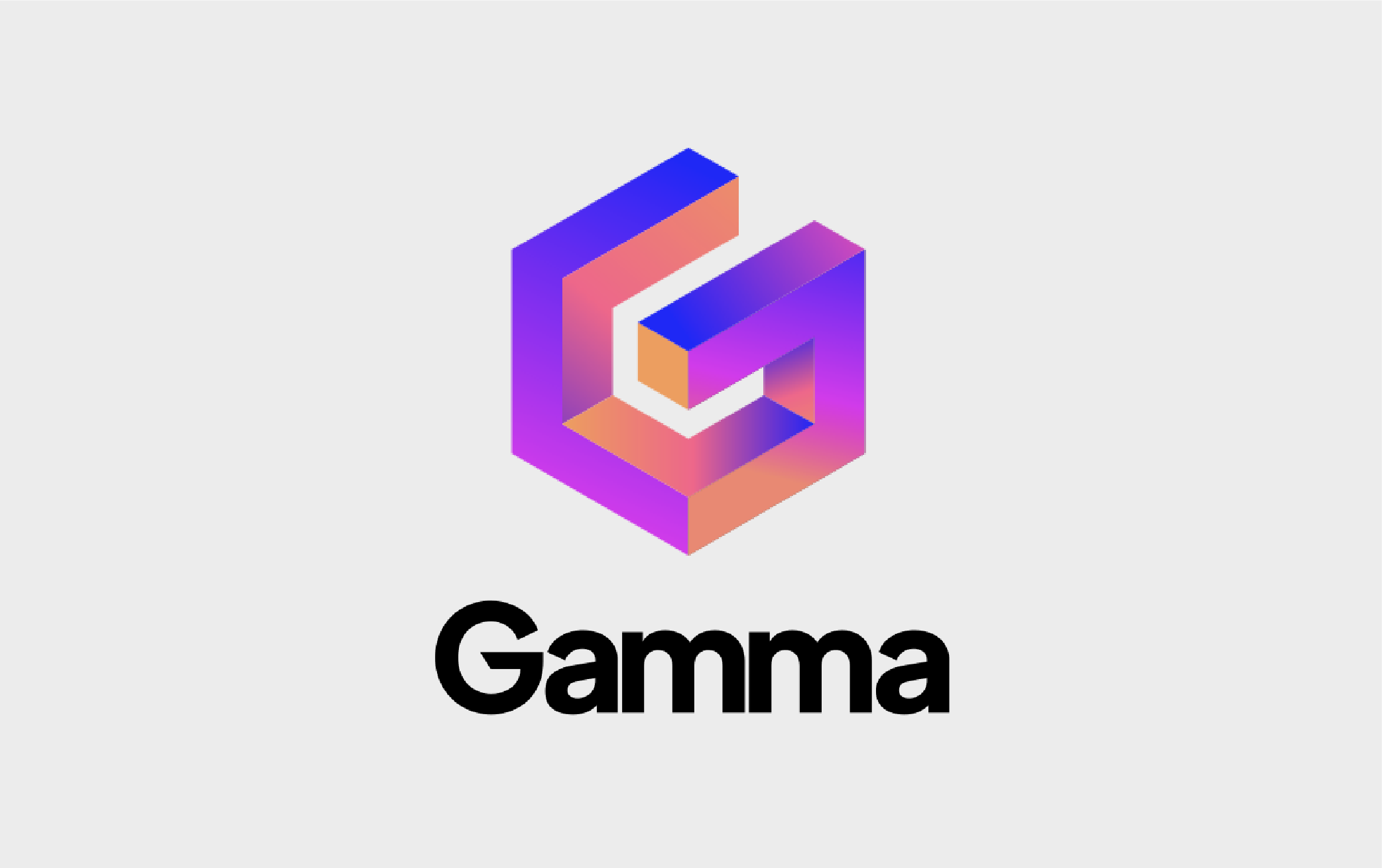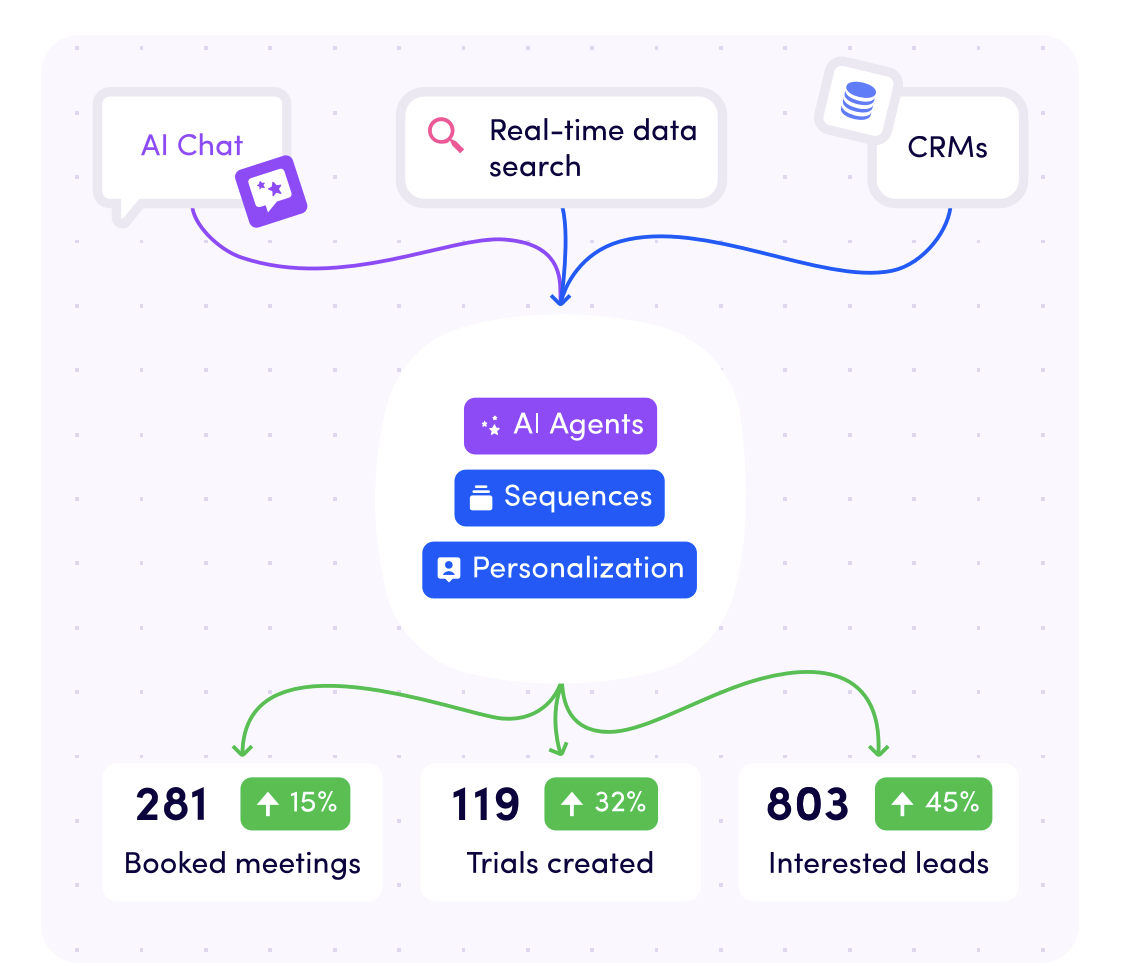
As we're already a month into 2024 (seriously, where did the time go?), the learning and development arena is gearing up for a rollercoaster ride of transformative trends.
Brace yourself, because the next 12 months are set to be a carnival of innovation, redefining the very fabric of how we learn and grow. 🚀
For all the knowledge enthusiasts out there, both individual learners and organisations ready to continue their learning journey, some exciting new trends are evolving!
In this fast-paced era, the days of clinging to traditional learning methods are fading away.
If you're nodding your head in agreement or raising an eyebrow in curiosity, you're in for a treat.
We're about to unpack 9 of the most important L&D trends that are poised to shape the future, for professional development.
So, if you're ready for an educational joyride, close knowledge gaps and are keen to stay ahead of the curve, let's dive into the trends that will make 2024 a game-changer in the realm of learning and development.
Ready, set, learn! 👇🏼
1. Generative AI skills
Let's dive into the pink elephant in the room: Generative AI skills. 🚀
A study done by Troodi, showed that Artificial intelligence is the most important trend in the field of people development
Knowing how to effectively work with Generative AI is becoming an important, if not necessary, skill across every single domain. Marketing, design, product, finance, and also in your learning & development team!
Generative AI will, for example, play a significant role in content creation for a more personalised learning journey.
Generative AI can be part of your learning & development team in the form of
- Personalised skill assessment and recommendations.
- Continuous learning with an AI Q&A chatbot specialised in a certain domain.
- Content creation focused on the learning & development goals with interactive elements
- Analyse individual learning patterns
Gartner predicts that up to 40% of companies will adopt the Natural Language Process and Generative AI in different aspects of their organisations, especially learning & development.
78% of people believe AI-generated content is here to stay
Want to know more about the importance of Generative AI skills?
👉 Take a look at this article to learn everything about how to prepare your business for the future of AI

2. Collaborative Learning
Collaborative Learning should not be new for you but it's an important trend that will keep evolving in 2024!
Collaborative learning isn't just a buzzword; it's about connecting the dots between performance, development needs, and collective knowledge.
For ages, those performance-driven L&D and knowledge wizards have been on a mission. Their quest? To connect employee performance with their development needs to collective knowledge and know-how.
Sounds cool, right?
Well, it wasn't.
Trying to dump people's wisdom into knowledge management tools, like Wikis, hasn't been very effective.
Let's forget the past failures of dumping everything into Wikis; it's time to forge meaningful connections that drive effective, organisation-specific learning experiences, by learning together!
When do people crave learning the most? During transitions—new roles, new teams.
Lean into these moments. Provide the support and guidance they need, and you've got the perfect recipe for growth and development.
Looking ahead to 2024, digital platforms and innovative tools will redefine collaborative learning. Think cloud-based document sharing, and virtual whiteboards—seamless and engaging collaboration is the future.
So, ready to make a real impact with collaborative learning?
Take a look at our learning environment where we've helped upskill more than 1000 organisations by learning together!

3. Microlearning Modules
Microlearning modules – the unsung heroes of efficient, bite-sized learning for the individual learner.
Now, I know the term "microlearning" might sound like some tech jargon but don't you worry! It's the learning equivalent of a quick espresso shot, not a marathon.
Imagine online learning being as breezy as scrolling through cat memes. That's what microlearning brings to the table – short, sweet, and to the point. The future of learning.
Picture this: you're at your desk, and in between sips of coffee, you dive into a microlearning module. Bam!
You've just acquired a new skill without breaking a sweat. It's like levelling up in a video game but for real life, with a 50% boost in knowledge retention!
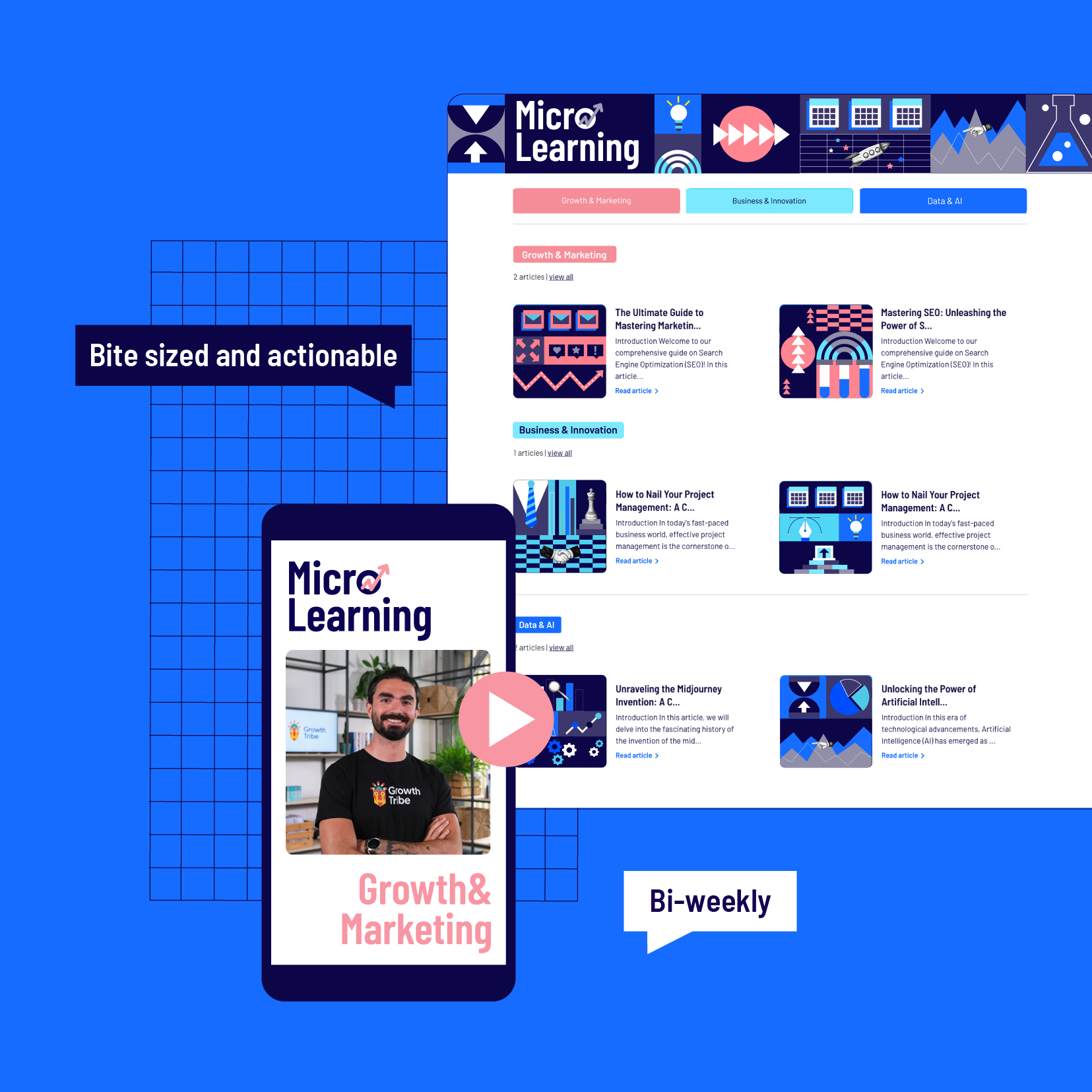
Duolingo has truly mastered this technology and brought this form of learning to the masses, read about it here.
Now, here's the juicy part – personalisation. Microlearning isn't a one-size-fits-all deal. It's your personalised training environment. Need to fill a skill gap? Boom, microlearning's got your back. Want just-in-time info? Microlearning serves it up like your favourite snack.
In 2018 microlearning already dominated 60.7% of all e-learning. During the chaos of 2020, microlearning adoption spiked by 40%. The crystal ball says, that by 2025, mobile learning will be the go-to for microlearning.
In a nutshell, microlearning is not just a trend; it's a revolution.

4. Data-driven approach to learning
Imagine your learning experience being as tailored as a bespoke suit, fitting you perfectly.
That's the magic of a data-driven approach – it's not just about learning; it's about learning with purpose.
In the coming year, we're witnessing a data revolution in learning.
It's not just about attending workshops; it's about using analytics to supercharge every step of your learning journey.
And oh boy, the benefits are nothing short of spectacular!
First up, predictive analytics takes centre stage; you're preparing for the skills of tomorrow, closing every possible skills gap.
Organisations are becoming fortune-tellers, using data to forecast future skill needs.
Learning Impact Measurement is the next big thing for 2024!
No more vague notions of training effectiveness – we're talking hardcore metrics with actual learning outcomes.
Improved job performance, increased productivity, and reduced turnover become the yardstick for success. 📊
And if that's not enough, we're introducing the rockstars of the show – Learning Analytics Dashboards.
These bad boys visualise key learning metrics, giving L&D professionals the power to assess and improve programs with a snap of their fingers. 🗃️
Now, here's the kicker – data doesn't just measure; it forecasts.
A data-driven learning strategy predicts results, establishes a roadmap, and provides multiple points of measurement for progress tracking.
It's like having a compass, a roadmap, and a progress bar all in one.
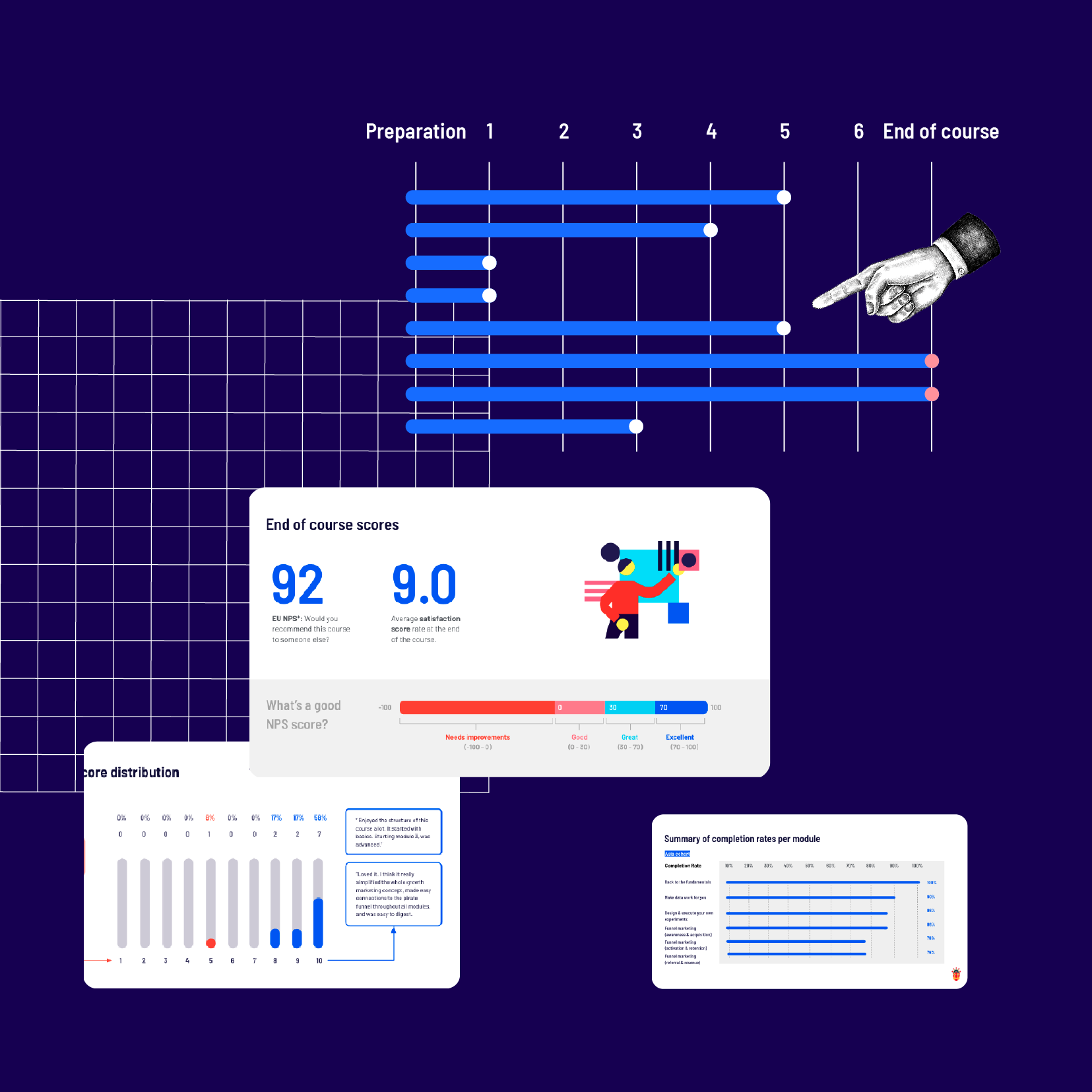
5. Agility & Continuous learning
In this dynamic era, successful businesses are not just about having a killer product; they're about having a killer ability to adapt, take the artificial intelligence boost as an example.
Enter continuous learning – the backbone of organisational agility.
Continuous learning will help you and your organisation be ready for every digital transformation necessary, focusing on future skills.
Now what does this exactly mean?
It means that your employees are constantly learning new skills, closing the knowledge gaps.
It's not about following a course for 8 hours per day.
👇
It's about a growth mindset where people continuously consume knowledge and learn from mistakes, observe others, listen to podcasts, read books, etc.
But hey, the spotlight is also on you – yes, you!
Organisations should be in charge of employee-driven Learning Paths. It's about taking control of their learning resources.
Now, let's talk design – Agile Methodologies in Learning Design.
Learning programs are not rigid structures anymore; they're agile, flexible, and responsive.
And here's the kicker – continuous learning is not a luxury; it's a necessity.
In the digital market of 2024, it's the lifeline to stay relevant.
A whopping 76% of professionals are more likely to work and stay at a company when they support continuous professional learning.
So, what's the bottom line? Continuous learning isn't a checkbox you tick off once in a while; it's a lifestyle.
It's about always seeking, sharing, gaining, and applying new knowledge. As Lynda Gratton rightly said
"Continuous learning in the workplace must become the new norm if individuals and organizations want to stay ahead."
👉 Check out this video on the importance of continuous lifelong learning.
6. Gamified learning
Gamification. It's not just a buzzword; it's a game-changer (pun intended).
So, what exactly is it? 🤔
Picture this: learning becomes a game, and education becomes an adventure.
Imagine turning your training sessions into a virtual battlefield with knowledge and engagement.
That's what gamification does – it transforms the mundane into the extraordinary.
Why is it a big deal? 🤔
Well, for starters, it's one of the hottest trends of 2024.
Leaders are realising that learning can be as exciting as a rollercoaster ride. Gamification is about infusing fun into the learning journey, making it more like a quest and less like a chore.
The secret sauce of gamification is motivation.
It's what transforms learners into eager participants. 83% of employees reported being more motivated at work when gamification was part of their training modules, resulting in higher talent retention!
And here's the real magic – gamification isn't just about making learning enjoyable; it's about making it effective.✨
Companies are realising that when you add a dash of competition, rewards, and interactive play, learners become more engaged and motivated.
A 2021 industry report revealed that the inclusion of games in training modules increased by 10% in just a year.
Again, Duolingo has really cracked the code here! Read about how they implemented gamification here.
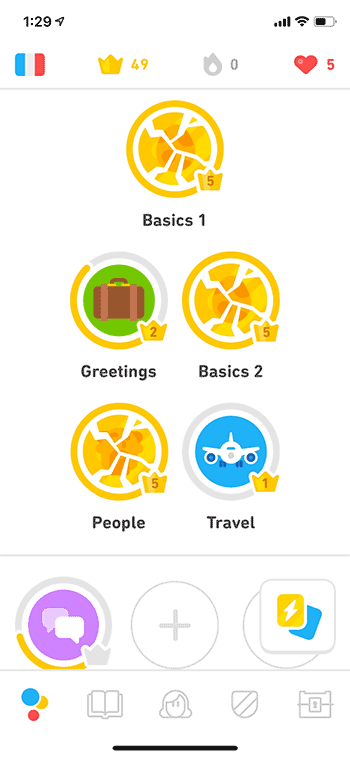 (source: Duolingo)
(source: Duolingo)
Let's take a look at some of the great benefits of gamified learning! 👇
1. Improved knowledge retention
In the era of technological advancements, this innovative approach is a revolution in traditional learning methods.
Its unique model not only captures the attention but also engages learners effectively.
This technique taps into the innate human desire for competition. It introduces elements like rewards, achievements, points, and badges.
The result?
An environment where learning not only becomes effective but also downright enjoyable, turning education into a thrilling adventure, and boosting employee development.
2. Accelerate employee training
A key benefit of gamification is accelerated learning.
Employees who feel rewarded for their learning efforts tend to be more eager to continuously learn and upskill.
Give your employees points and badges, and maybe even incorporate a leaderboard into the learning journey.
This not only makes learning more engaging but also increases the likelihood of completion.
3. Improved collaborative learning
In a gamified learning setting, employees are not just learning; they're engaging in friendly competition!
This approach cultivates a sense of togetherness and teamwork among team members. Especially in the current landscape of remote work, where social interactions might be limited, gamified learning steps in as a virtual catalyst for collaboration.
By providing opportunities for positive interactions and teamwork, gamification becomes a powerhouse for strengthening team relationships and enhancing overall performance.
It's not just about individual progress; it's about bringing the entire team closer to the organisation's business goals.
7. Skills-based organisations
Welcome to the future of work, where traditional job structures are taking a back seat, and individual skills are the shining stars in the organisational galaxy.
For ages, jobs have dictated the how, who, and what of work, standardising tasks within a job title.
This has a direct negative impact on goals like agility, growth, diversity, and positive workforce experiences.
Enter the skills-based organisation!
Unilever is leading the way. Anish Singh, Unilever's Head of HR for Australia and New Zealand, shares the company's vision:
We’re beginning to think about each role at Unilever as a collection of skills, rather than simply a job title. U-Day was created in response to feedback from our employees that they wanted more capacity to focus on career development and learning opportunities!
Organisations are experimenting with a better way—decoupling work from jobs. Whether it's breaking tasks into projects or focusing on problem-solving, this approach sees individuals as multifaceted beings with skills fluidly deployable to match their interests and evolving business priorities.
This groundbreaking shift is the birth of what we call "the skills-based organization."
In essence, a skills-based organization prioritises employee skills, continuous learning, and adaptability over traditional hierarchical structures.
No longer confined by siloed departments, this model thrives on the idea that skills and competencies should be the primary drivers of employee development and organisational growth.
(Image source: Deloitte)
8. Blended Learning
Blended Learning – the dynamic duo of traditional and digital education that's reshaping the learning landscape.
A perfect blend of the old-school charm of classroom instructor-led training and the futuristic wonders of eLearning.
Blended learning is not just a mix of live and online sessions; it's a symphony of learning formats that cater to everyone's needs.
In the education arena, blended learning is the ultimate game-changer. The live interaction of a traditional classroom and the convenience of an online learning ecosystem with pre-recorded resources.
A review of recent studies reveals that blended learning practices have had positive effects on learning and performance.
Take a look at this article where we fully dive into the beauty of blended learning.
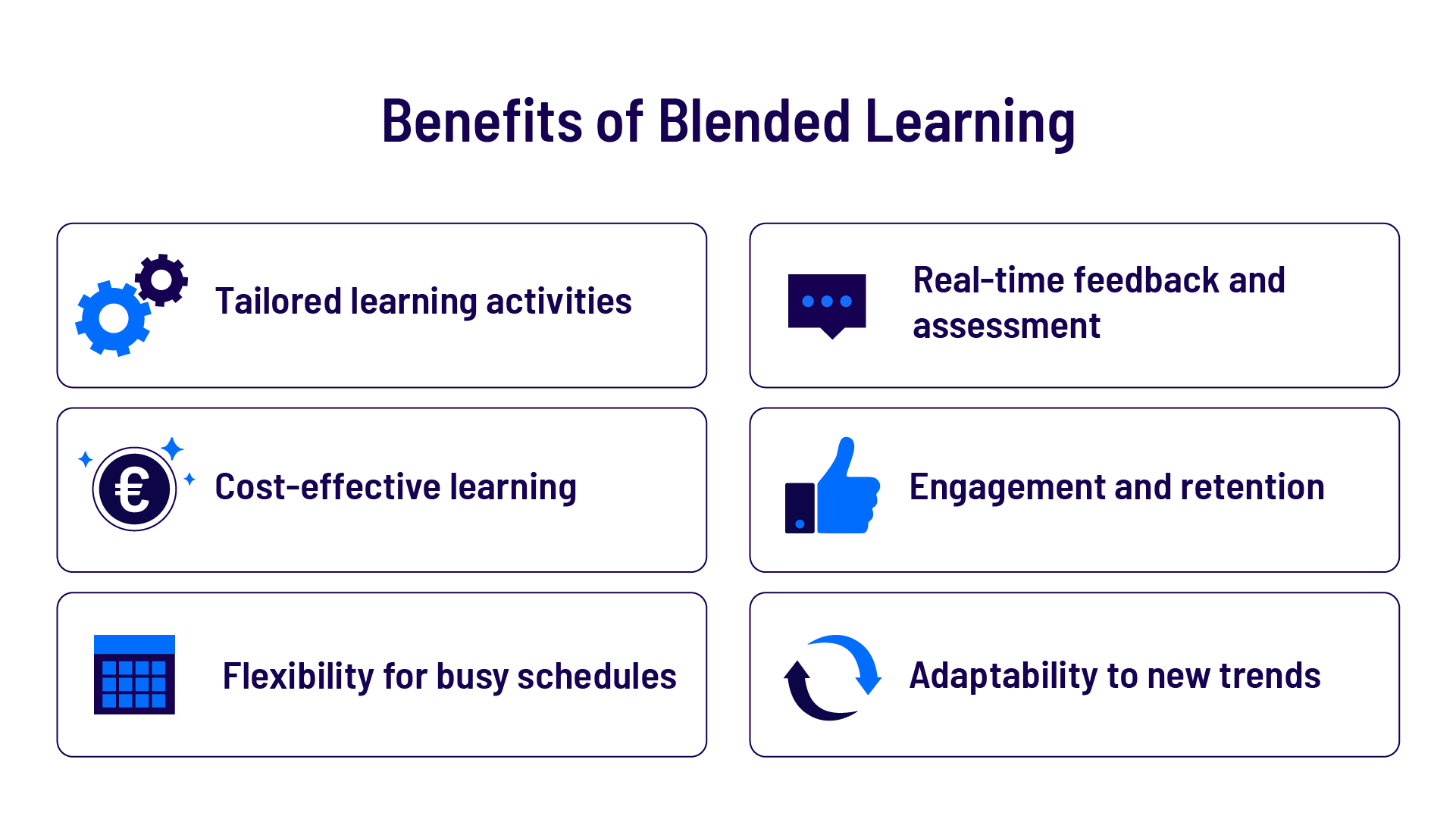
9. Learning in the flow of work
Learning in the flow of work is all about serving up training content right when it's needed, seamlessly integrated into the existing workflow.
The magic happens when learning is in context – learners receive information exactly when they can apply it, boosting engagement, productivity, and delivering a higher return on training investments.
In practical terms, Learning in the Flow of Work (LIFOW) isn't just about easier access to training; it's about providing teams with precise knowledge at the exact moment they need it.
Matthew Smit, Chief Learning Officer at McKinsey nicely pointed out that
There’s a huge role that organizations play in setting the context and the culture for learning. Like so many things, it starts at the top, and it starts with having a CEO or a senior leader who actually values learning and talks about it very actively.
When learning seamlessly integrates into daily routines and becomes so ingrained that it's no longer labelled as "learning," it transforms into an integral part of how work happens.
Bonus trend: social media as a learning tool
In light of the microlearning trend, we're seeing a great trend evolving in the social media landscape.
Welcome to Learning on Social Media, where knowledge meets connectivity in unprecedented ways.
The learning landscape isn't confined to traditional institutions anymore.
A recent survey revealed that platforms like TikTok and Instagram, initially designed for entertainment, have become significant learning tools.
Google's Senior Vice President, Prabhakar Raghavan, notes that
40% of young people use TikTok or Instagram for search, a trend that's even more pronounced in our data – 47% of 18 to 25-year-olds surveyed report using TikTok for learning.
Take a look at these examples on YouTube
- CrashCourse - 15.3M subscribers
- KhanAcademy - 8.2M subscribers
- AsapSCIENCE - 10.2M subscribers
- Kurzgesagt - 21.7M subscribers
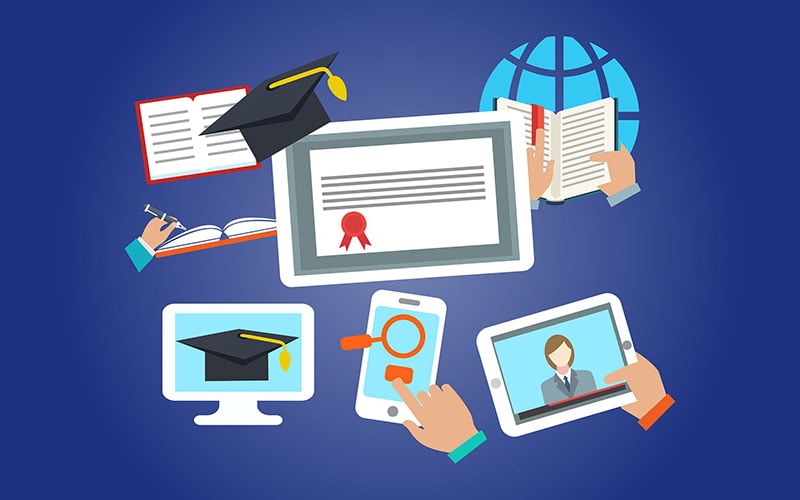
The global education & training market is growing
The education and training market had a bit of a reality check in 2020. Tuition deflation hit higher education, and the whole sector had to tighten its belt by about $500 billion compared to the pre-COVID era.
The good news?
Efficiency is the name of the game, with digitization turning the cogs and wheels of progress across all sectors.
Organizations, EdTech companies, and educational institutions are feeling the heat.
Budgets are tight, innovation is under pressure, and everyone's eyeing technology like it's the hero that will save the day.
AI is taking the spotlight, and the challenge is real – how to keep up with diverse learning modes and designs.
Talent is the golden ticket, but the labour market is doing a tightrope walk, recovering from a period of disruption.
Fast forward to 2025, HolonIQ expects that we're looking at a $7.3 trillion market in global education and training expenditure.
(Image source: HolonIQ)
The problem with MOOCs like LinkedIn Learning
Now, it's no secret that MOOCs were hailed as the superheroes of education, swooping in to make learning accessible to the masses.
But here's the reality check – it seems they fell a bit short of the grand entrance they promised.
In this article, InsideHigherEd reviews the great work of 2 two researchers who analysed the MOOC industry and its shortcomings.
First off, completion rates went down from 2013-14 to 2017-18. We're talking about a mere 3.13% of all MOOC participants completing their courses in 2017-18, down from almost 6% in 2014-15.
Even among the "verified" students – the ones who paid for the premium experience – the completion rate dipped to 46% in 2017-18.
The researchers rightly point out that bringing new learners into higher education is like throwing a party if you can't get anyone to stay until the end.
Next up, is the global reach of MOOCs. Ever heard the rhetoric about democratizing education worldwide?
Well, turns out it might have been more like democratising it within certain postal codes. In 2017-18, a whopping 68.7% of MOOC students came from countries with "very high" human development.
The rest? Well, they shared the remaining 31.3%, but only 1.43% came from countries in the "low" category.
So, instead of creating new educational frontiers, MOOCs ended up being more like the sidekick, complementing existing systems rather than breaking down barriers.
Lastly, the drop-off rate. In 2015-16, 1.1 million students jumped on the MOOC bandwagon. Fast forward to 2016-17, and only 12% of them stuck around for another ride.
The following years? A steady decline. The proportion of first-time MOOC users continuing the journey dropped from 38% in 2012-13 to a mere 7% in 2016-17.
MOOCs might have given a taste of education to some, but the grand promises of revolutionising the global learning landscape?
Well, let's just say they got a bit tangled up in their digital wires.
(Image source: Insidehighered)
Curious how we solve these issues?
We empower individuals and organizations to thrive in the digital world by offering a blend of online and live learning experiences focused on the most in-demand digital skills.
It’s our mission is to bridge the digital skills gap, catering to professionals and team leaders in both B2B and B2C markets. As your learning partner, we aim to enhance skills, foster a learning culture, and provide clarity and confidence in the ever-evolving digital landscape.
We offer high-quality courses, modules, and microlearning on in-demand topics, ensuring flexibility and efficient learning.
We accelerate your digital transformation through highly enjoyable, actionable and hands-on learning programs. We’ve never had so much access to knowledge, and learners have never been so overwhelmed.
Growth Tribe helps you cut through the noise and teaches your people and teams the skills they need to grow.
Our engaging and interactive content makes the learning experience enjoyable and impactful, empowering your workforce with practical insights and real-world application.
Say goodbye to dull lectures and hello to dynamic learning experiences that equip you with the skills and knowledge needed to thrive in today's fast-paced world.
Experience a new era of learning with Growth Drive, where time constraints are no longer a barrier to continuous growth and development.
👉 You can experience the Growth Tribe platform with a free demo here.
Categories
- Business & Innovation (83)
- Growth & Marketing (72)
- Artificial Intelligence (52)
- Data & Analytics (16)
- Case studies (10)
- Project Management (10)
Related articles
Latest articles
ChatGPT Search Unveiled: Should You Make The Switch Now?
Picture this: You’re no longer just “searching” the web—you’re...
Shadow AI Explained: How to Harness Hidden AI Without the Risks
Picture this: your team is under pressure to deliver results—fast....
The 33 best AI tools for commercial teams
The tools are split into 2 categories The best AI tools for your...
B2B Growth Blueprint: How to Drive Sales and Build Strong Partnerships
In today’s fast-paced world, B2B companies are like ships...







